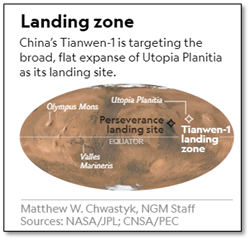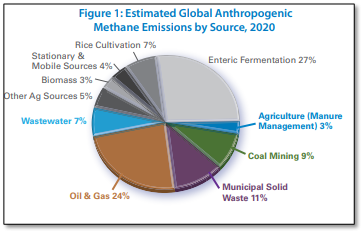Wednesday, 19th May 2021
West Bengal government to set up a Legislative Council
In News
The West Bengal cabinet has decided to set up a Legislative Council. The formation of a legislative council was one of the promises included in the election manifesto of the Trinamool Congress.
|
Constitutional Provision for the abolition or creation of a Legislative Council · The Parliament can abolish a legislative council (where it already exists) or create it (where it does not exist) by a simple majority, that is, a majority of the members of each House present and voting, if the legislative assembly of the concerned state, by a special majority, passes a resolution to that effect. Composition ● Under Article 171 of the Constitution, the Legislative Council of a state shall not have more than one-third of the total strength of the State Assembly, and not less than 40 members. Current Status · Presently, 6 states in India have Legislative Council (LC)- Andhra Pradesh, Karnataka, Telangana, Maharashtra, Bihar and Uttar Pradesh. · Andhra Pradesh had passed a resolution in 2020 to abolish its LC. · Several states like Odisha, Rajasthan, Assam and most recently Tamil Nadu have demanded for setting up of legislative council. |
What is the rationale for creation of State Legislative Councils?
- Check on hasty legislation: A second House of legislature is considered important to act as a check on hasty enactments by the popularly elected House. It ensures that laws enacted by the state legislature are carefully analysed and discussed.
- Prevent arbitrary and populist legislation: The second house can prevent the popularly elected house from enacting arbitrary and harmful legislations.
- Sharing workload with the assembly: Legislation is emerging as a challenging and complex activity in the modern welfare states. Legislative council can help to lessen the workload of the Assembly.
- Accommodation of experienced individuals: The second chamber helps to ensure that those people who have experience in specific areas like science, social work etc are accommodated in the legislature through nominations without going through elections.
What are the criticisms levelled against State Legislative Councils?
- No substantial power: Unlike the Rajya Sabha that enjoys substantial powers to shape non-financial legislation, Legislative Councils lack the constitutional mandate to do so. Legislative Assemblies have the power to override suggestions/amendments made to a legislation by the Council. The Legislative Council acts as a drain on the exchequer.
- Accommodating Party Functionaries: The Legislative Council becomes a forum to accommodate party functionaries who fail to get elected to the assembly.
- Promotion of vested interests: In case the opposition party has a majority in the Legislative Council, it becomes a means to delay legislation initiated by the popularly elected Legislative Assembly.
Machine learning helps pick out stars in a crowd
In News: Indian Astronomers have developed a new method based on machine learning that can identify cluster stars (assembly of stars related through common origin) with much greater certainty.
Studying stars in a Star cluster:
- Studying stars and how they evolve is the cornerstone of astronomy. However, understanding them is difficult since they are observed at different ages.
- A star cluster (large groups of stars having same origin) is a great place to study stars as all the stars in a cluster have approximately the same age and chemistry and any differences seen can be attributed to the peculiarities in individual stars with certainty.
Complexity involved in identification of stars:
- As the clusters are part of the Milky Way, there are many stars between us and the cluster, which makes identification of stars belonging to a particular cluster complex.
- To simplify the process, a team of astronomers from Indian Institute of Astrophysics(IIA), an autonomous institute of the Department of Science & Technology, have made use of European Space Agency (ESA)’s recently released Gaia Early Data Release 3 (EDR3).
- EDR3 gives very accurate information about the brightness, parallax, and proper motion of more than a billion stars with an accuracy of 1 milli-arc-second (equivalent to seeing a person standing on the moon) to pick out the stars that are cluster members.
Probabilistic Random Forest Technique:
- IIA team identified the crucial measurements for this task and understood the complex relationship between these parameters, using a machine learning technique called Probabilistic Random Forest.
- This uses a combination of parallax, proper motion, temperature, brightness and other parameters to classify each star as a cluster member or a non-member.
- The IIA team trained their algorithm using the most likely members from a model called the Gaussian Mixture Model, which can identify clumps of co-moving stars.
- The Probabilistic Random Forest algorithm then learns how to identify a typical cluster member star and efficiently takes out stars that share only similar proper motions or only similar velocities as the cluster itself.
Outcome from this method:
- The team with the help of this catalogue of members was able to identify the hottest stars in the six clusters using ultraviolet images from Ultra-Violet Imaging Telescope (UVIT) on the Indian space observatory ‘AstroSat’.
- This work has been published in the scientific journal ‘Monthly Notices of the Royal Astronomical Society’ that has already resulted in discovering hot subdwarf-B type stars (compact stars that are very rare) in open cluster King 2.
- The tool helped confirm that these stars are indeed part of the cluster, though showing unexpected properties.
- The newly developed method can now identify cluster stars with much greater certainty and pinpoint individual stars that behave differently from their siblings.
Significance of new AI algorithm:
- Manual identification of stars belonging to a star-cluster is a daunting task as it involves an armload of data to be analysed.
- The new artificial intelligence-based algorithm is very promising in automating and greatly speeding this process and may also find uses in other areas of analysis of patterns in biology and materials science.

Primary source: https://pib.gov.in/PressReleasePage.aspx?PRID=1719644
IEA’s Road map for achieving net-zero global carbon emissions by 2050
In News
The International Energy Agency (IEA) published a report outlining the essential conditions for the global energy sector to reach net-zero CO2 emissions by 2050
About the News
- The number of countries announcing pledges to achieve net-zero emissions over the coming decades continues to grow. But the pledges by governments to date, even if fully achieved, fall well short of what is required to bring global energy-related carbon dioxide emissions to net zero by 2050 and give the world an even chance of limiting the global temperature rise to 1.5 °C.
Key Features of the Roadmap
- A rapid shift away from fossil fuels: Net zero means huge declines in the use of coal, oil and gas. This requires steps such as halting sales of new internal combustion engine passenger cars by 2035 and phasing out all unabated coal and oil power plants by 2040.
- Widen the path to net-zero emissions: Staying on the path requires the massive deployment of all available clean energy technologies, such as renewables, EVs and energy efficient building retrofits.
- Carbon capture, utilisation and storage (CCUS) contributes to the transition to net zero in multiple ways.
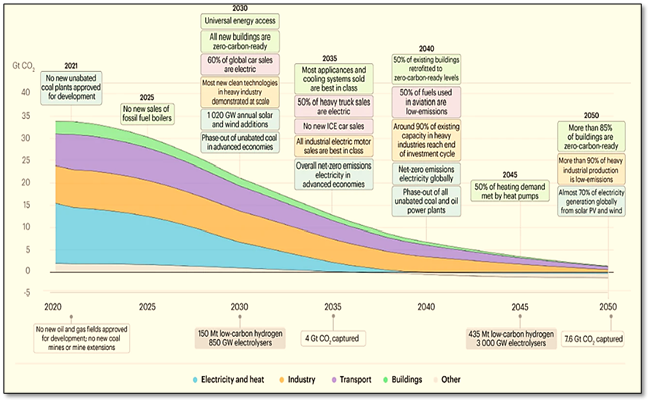
- Electricity becomes the core of the energy system: Electricity generation will need to reach net-zero emissions globally in 2040 and be well on its way to supplying almost half of total energy consumption. This will require huge increases in electricity system flexibility, such as batteries, demand response, hydrogen-based fuels, hydropower and more, to ensure reliable supplies.
- International Cooperation: It will also require greater international cooperation among countries, notably to ensure that developing economies have the financing and technologies they need to reach net zero in time.
- Behavioural changes: Achieving net zero by 2050 cannot be achieved without the sustained support and participation from citizens. Behavioural changes, particularly in advanced economies – such as replacing car trips with walking, cycling or public transport, or foregoing a long-haul flight –provide around 4% of the cumulative emissions reductions in our pathway.
The SWAMIH fund
In News
Government’s Special Window for Affordable & Mid-Income Housing (SWAMIH) completed its first residential project.
About the SWAHIM fund
- The ‘Special Window for Completion of Construction of Affordable and Mid-Income Housing Projects’ (SWAMIH) fund was announced in November 2019.
- An AIF: SWAMIH, a category II Alternative Investment Fund (AIF), has a target corpus of INR 12,500cr, with a green-shoe option of an additional Rs 12,500 crore and aims to provide financing to enable completion of stalled housing projects and ensure delivery of apartments to troubled homebuyers.
- Alternative Investment Fund or AIF means any fund established or incorporated in India which is a privately pooled investment vehicle which collects funds from sophisticated investors, whether Indian or foreign, for investing it in accordance with a defined investment policy for the benefit of its investors.
- Criteria: Funding shall be provided to the projects which are stalled for lack of adequate funds, Affordable and Middle-Income Category, Net worth positive projects (including NPAs and projects undergoing NCLT proceedings), RERA registered and projects very close to completion.
- Investors of the Fund: It will solicit investment from the Government and other private investors including cash-rich financial institutions, sovereign wealth funds, public and private banks, domestic pension and provident funds, global pension funds and other institutional investors.
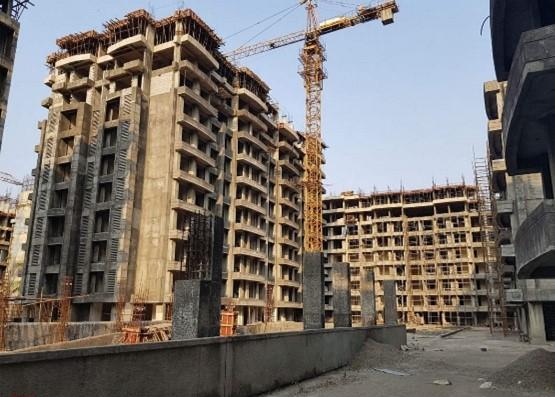
What are the real estate hurdles that the SWAHIM funds aims to resolve?
- Stalled Projects: At the time when this fund was created India had an estimated $63 billion worth of such stalled projects. Builders were unable to service their loans, forcing banks to write off the debts and worsen what was already one of the world’s biggest bad-loan piles.
- Erosion of trust due to delated projects: Consequently, the conventional mechanism for financing projects by builders, by which they sold under construction units, and use those funds for the project, had broken down.
- Funding problems: In India, banks don’t fund the land component, a major part of the project cost. Even for the construction component, banks are risk averse. Even when banks do lend, they tend to do so conservatively, without considering the day-to-day fluctuations in construction costs on account of changes in prices of cement, steel, etc.
- Lending Structure: The present lending structure enables banks to lend to companies as a whole, not to a specific construction project. As a result, most builders rely on non-banking financial companies (NBFCs). However, after the Infrastructure Leasing & Financial Services (IL&FS) crisis, NBFCs, too, were unable to meet demand.
- Double trouble for homeowners: On one hand, the households were paying their monthly instalments while on the other, they were paying rents as their homes were yet to be constructed.
Mechanisms under the SWAHIM fund that will resolve the hurdles
- Unique Financial structure: The SWAMIH fund provides money to projects as a stand-alone entity, not to a builder. So, to lend to a project, a viability assessment of the project is conducted, after which SWAMIH provides additional funding. This financial structure enables builders to complete projects in the interest of both builders and homeowners.
- Self-compliant financing structure: Funding is distributed in stages, ensuring additional funds are disbursed only once the builder meets a particular project milestone. Moreover, at each construction site, there is a representative of an independent project management company, who checks labour and material movement while the disbursements happen directly to vendors as required. This ensures that the money is used only for construction-related payments. The fund has complete control on the input escrow account. This ensures scrutiny of funds to ensure proper due diligence.
- Competent Sanction limit: The sanction limit is sufficient to complete the entire project without significant dependence on collections and incremental sales. This is to ensure that the financing is adequate, thereby providing all possible support to the builder during the project cycle.
- Payback structure: The interest and payment liability begin after the completion of construction of the project. To ensure that funds are recovered, the lender has the first charge on the assets constructed using SWAMIH funds.
- Prudent decision making: All investment decisions will be taken by an independent investment committee. External members from large law firms, construction companies, persons with development or home finance expertise, and private equity investment professionals with domain knowledge, will enable prudent decisions making regarding financing of projects.
- Benefits of Alternate Investment Fund: For developers who are already stressed, it might not be very simple to raise the required capital completely on their own. However, an AIF can fill the gaps by securing funding from other institutional and retail investors, thus bringing great relief to the developers and offering them a viable exit.
- Speedy completion of projects: The fund team encourages the developer to start multiple points of work on the same site. The idea is to finish construction in the shortest pace of time unlike in the past when developers paced construction to match the sales velocity
- SWAMIH fund has been encouraging developers to follow the Complete and Sell Homes (CASH)
- Many such projects are 60-70% complete and only need recapitalization or kick-start financing to get the work back on track. Once completed, the overall cash flow of the projects can be drastically improved, and a large amount of capital locked up in these projects will be released.
- Confidence among homebuyers: Government of India had stepped in to provide funding to the stressed affordable and mid-income housing projects thereby giving relief to the home buyers who had invested their hard-earned savings. The last-mile funding being made available to these projects has instilled confidence among homebuyers.
Conclusion
The fund has an innovative financing structure that must be replicated across several capital-intensive industries. Since the real estate industry is intrinsically linked with several other industries, growth in this sector will have a positive effect in releasing stress in other major sectors of the Indian economy as well. It will provide employment to construction workers and will provide impetus to the allied industries such as steel and cement.
But some challenges need to be addressed like, SWAMIH takes first charge on assets and cash flows, which means they get paid first once the project is completed. Lenders are worried that acceding charge would result in change in asset classification, higher provisions etc.
Question: Analyse how SWAMIH fund can be a game-changer for the real-estate sector.
https://www.sebi.gov.in/sebi_data/attachdocs/1471519155273.pdf
This Day in History - Legion of Honour
On May 19, 1802, the Legion of Honour, officially National Order of the Legion of Honour, premier order of the French republic, was created by Napoleon Bonaparte, as a general military and civil order of merit conferred without regard to birth or religion provided that anyone admitted swears to uphold liberty and equality. For two centuries, it has been presented on behalf of the Head of State to reward the most deserving persons in all fields of activity. The award is conferred by the President of the French Republic. Many Indians to have received this honour in the past include Kiran M Shaw, Yashwant Sinha, Narayana Murthy, Amitabh Bachchan among others.
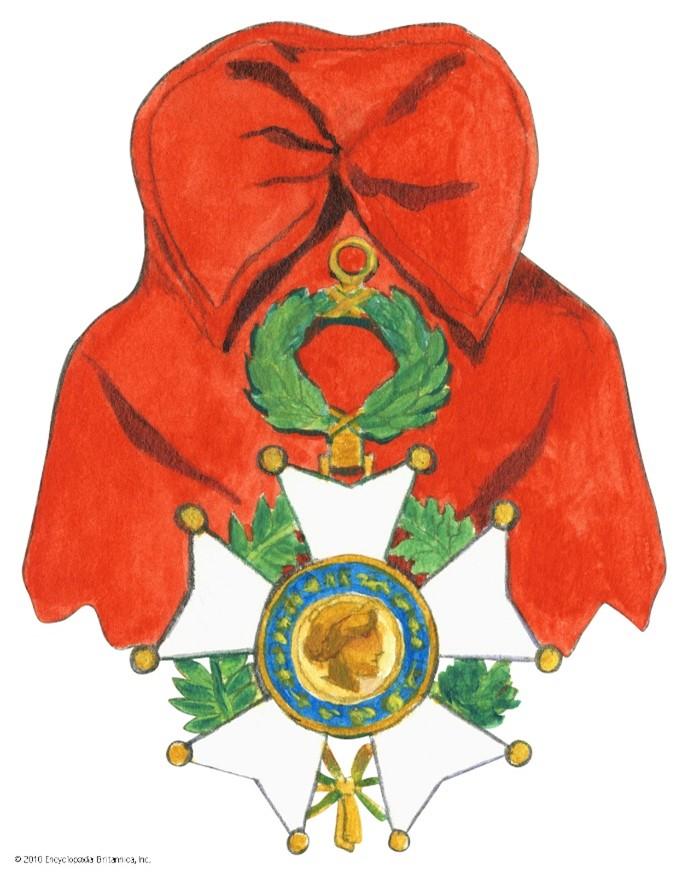
Image of the Day - Darwin’s Arch
Darwin’s Arch, a rock formation south-east of Darwin Island in the Galápagos archipelago, Ecuador has collapsed due to natural erosion. The rock formation was named after the British scientist Charles Darwin, who visited the islands in 1835 and developed his theory of evolution by examining Galápagos finches. Darwin’s Arch is made of natural stone. The arch is famous as a diving spot for underwater encounters with sea turtles, whale sharks, manta rays and dolphins. The Galápagos islands, declared as one of the first UNESCO world heritage sites in 1978, contain flora and fauna not seen anywhere else on earth and are part of a biosphere reserve.

Eklavya Model Residential Schools (EMRS)
- Context: MoU between Ministry of Tribal Affairs and Microsoft to support digital transformation of Eklavya Model Residential School and Ashram schools.
- EMRS started in the year 1997-98 to impart quality education to ST children in remote areas. It enables them to avail opportunities in high and professional educational courses and get employment in various sectors.
- By the year 2022, every block with more than 50% ST population and 20,000 tribal persons will have an EMRS.
- Eklavya schools will be at par with Navodaya Vidyalaya and will have special facilities for preserving local art and culture besides providing training in sports and skill development.

Primary source: https://tribal.nic.in/EMRS.aspx
ELDERLINE
- Context: Toll Free Helpline for elderly persons ELDERLINE (14567) becomes operational in several states.
- In order to address the health, emotional, legal and other issues faced by elders during the ongoing COVID pandemic, the Ministry of Social Justice has started state-wise call centers in major states under the ELDERLINE project.

Primary source: https://pib.gov.in/PressReleasePage.aspx?PRID=1719318
Farzad-B Gas Field
- Context: Iran has given the Farzad B gas field to a domestic gas producer, Petropars.
- The contract for exploration was signed with ONGC Videsh Limited in 2002 and the block was deemed commercially viable in 2008.
- Farzad-B is an off-shore natural gas field 20 kilometres off Farsi Island located in Persian Gulf (Iran).
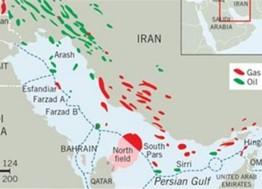
Primary source: https://indianexpress.com/article/business/ovl-loses-operating-rights-for-irans-farzad-b-gas-field-7320606/
Escrow Account
- Context: Recently, Securities and Appellate Tribunal (SAT) allowed National Stock Exchange (NSE) to withdraw money from Escrow Account.
- Escrow account is a financial instrument in which an asset or escrow money is held by a third party on behalf of 2 other parties that are in the process of completing a transaction. It provides security against scams and frauds especially with high asset value and dispute-prone sectors like real estate. The transacting parties can track the movement of funds and progress of the contractual commitment.
- Startups and emerging businesses can leverage escrow payment methods to minimize risk for their specific-use transaction cases like procurement, supply chain, professional services, etc.

Primary source: https://www.financialexpress.com/money/what-is-an-escrow-account-and-who-can-use-it/1913875/
https://corporatefinanceinstitute.com/resources/knowledge/deals/escrow-agreement/
Stemming India’s health worker brain drain- IE
Essence: Currently, the reported number of daily cases are a little less than three lakh. The country is grappling with problems ranging from insufficient hospital beds, ICUs and ventilators to shortages in oxygen supply, resulting in a high number of deaths, with more than 4,000 deaths being reported daily. Against these circumstances leading to overburdening of health care workers and their shortage, this article makes a case for arresting health worker brain drain.
Why you should read this article?
- Know about the current data on healthcare worker to population ratio in India vis-à-vis other countries.
- Understand the reasons for their brain drain and migrant-friendly policies of destination countries
- Learn about the recent government’s policies to check brain drain and their impact
- Identify the necessary systematic changes beneficial for health workers, ranging from increased investment in health infrastructure, ensuring decent pay to workers and building an overall environment including policies that promote circular migration and return migration.
The story of Indian diplomacy in Africa- HT
Essence- Recently there has been much of criticism over ‘India’s vaccine diplomacy’ when India is struggling to vaccinate its own people due to short supplies. India wanted to deepen its footprint in Africa through a vaccine strategy and pre-existing social capital, but it has not matched with China’s economic and investment presence in Africa. From Indian trade with and immigration to Africa during the British colonial years to its subsequent pioneering of the Non-Aligned Movement (NAM), India established many links to African nations. Recently, The India-Africa Framework for Strategic Cooperation signed in 2015 provided impetus to India-Africa trade. Yet, despite these achievements, India’s presence in Africa has also lagged significantly behind China due to its economic footprint, Belt and Road Initiative (BRI) projects, etc. Because of the social capital India has in Africa, acquired through the historical, political, economic, etc. its presence is welcomed by African countries in a way that China’s is not. And India’s vaccine diplomacy could have paid off because of serious doubts about China’s vaccines efficacy. As China is still struggling to ramp up the efficacy of its vaccines, perhaps there may still be a shot for the government to reboot its strategy once the pandemic is under control at home.
Why you should read this article?
- To get a quick overview of India’s diplomatic relationship with Africa.
- To understand the reasons for criticism over India’s vaccine diplomacy.
- To understand why despite presence of India’s immense social capital in Africa, India is lagging behind China.
Article Link: https://www.hindustantimes.com/opinion/the-story-of-indian-diplomacy-in-africa-101621342934174.html
BN Rau: A Civil Servant Who Built India’s Democracy
Background:
- A study of building of India’s Democracy ranges from the freedom struggle, the formation of the Constituent Assembly and a series of critical discussions about the diverse Indian society.
- However, often forgotten in this journey are the civil servants who worked in the Constituent Assembly Secretariat (CAS) without whom the Indian democratic project would have probably never initiated on the ground.
- Leading the charge for the CAS was Sir Benegal Narsing Rau, the Constitutional Advisor.
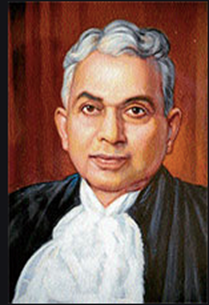
About Sir Benegal Narsing Rau:
- Dr Rajendra Prasad, the President of the Constituent Assembly, referred to him as the person who visualised the plan and laid the foundation of the Indian Constitution.
- He was the Constitutional Advisor who laid down firm conditions before the Constituent Assembly to work in non-political, non-partisan in character, whose services are available to every member, irrespective of party and creed.
- He was a firm believer of universal adult franchise and believed that no Indian voter should be left behind in the process.
- For Constituent Assembly members in India, he took up the responsibility of preparing all the necessary background material to smoothen the process of drafting the constitution.
- He worked anonymously behind the scenes fulfilling his duty toward the nation and citizens.
Values Upheld by him
- Anonymity, Professional Ethics, Dedication to Duty, Leadership
Where can we use this case study:
- As an example of working behind the scenes, contribution of civil servants in building of the nation, as an example of altruistic and ethical leadership
Share the article
Get Latest Updates on Offers, Event dates, and free Mentorship sessions.

Get in touch with our Expert Academic Counsellors 👋
FAQs
UPSC Daily Current Affairs focuses on learning current events on a daily basis. An aspirant needs to study regular and updated information about current events, news, and relevant topics that are important for UPSC aspirants. It covers national and international affairs, government policies, socio-economic issues, science and technology advancements, and more.
UPSC Daily Current Affairs provides aspirants with a concise and comprehensive overview of the latest happenings and developments across various fields. It helps aspirants stay updated with current affairs and provides them with valuable insights and analysis, which are essential for answering questions in the UPSC examinations. It enhances their knowledge, analytical skills, and ability to connect current affairs with the UPSC syllabus.
UPSC Daily Current Affairs covers a wide range of topics, including politics, economics, science and technology, environment, social issues, governance, international relations, and more. It offers news summaries, in-depth analyses, editorials, opinion pieces, and relevant study materials. It also provides practice questions and quizzes to help aspirants test their understanding of current affairs.
Edukemy's UPSC Daily Current Affairs can be accessed through:
- UPSC Daily Current Affairs can be accessed through Current Affairs tab at the top of the Main Page of Edukemy.
- Edukemy Mobile app: The Daily Current Affairs can also be access through Edukemy Mobile App.
- Social media: Follow Edukemy’s official social media accounts or pages that provide UPSC Daily Current Affairs updates, including Facebook, Twitter, or Telegram channels.

